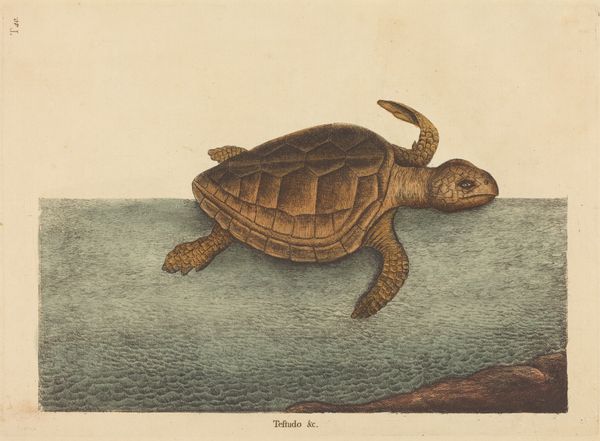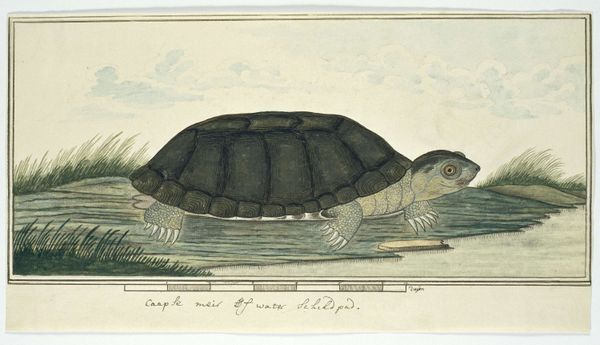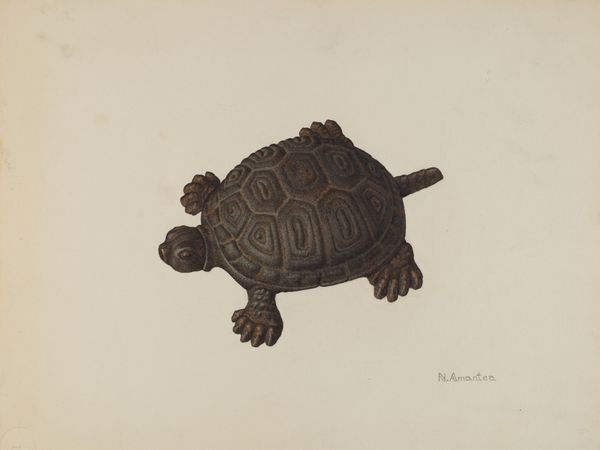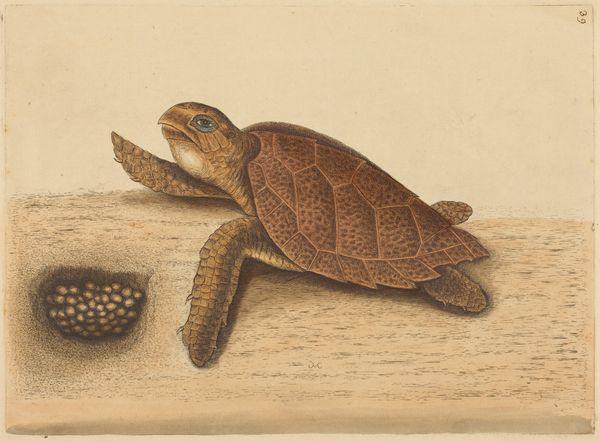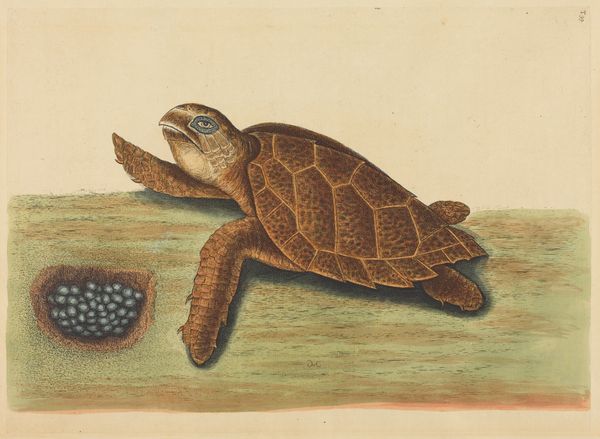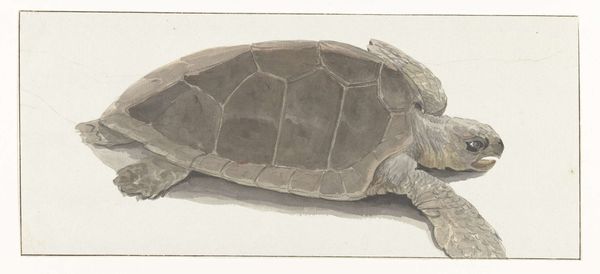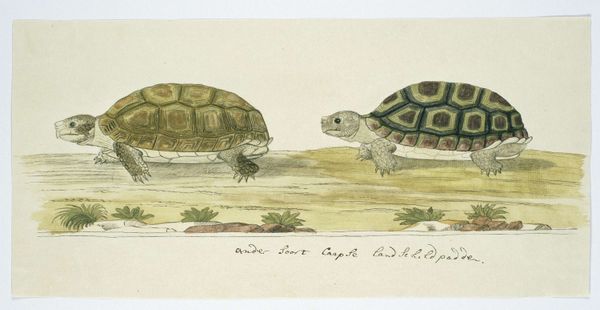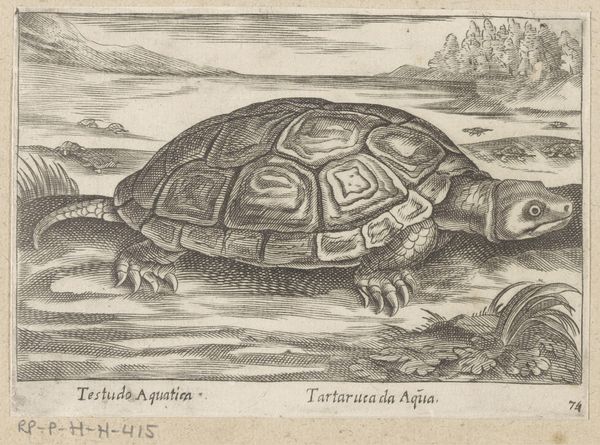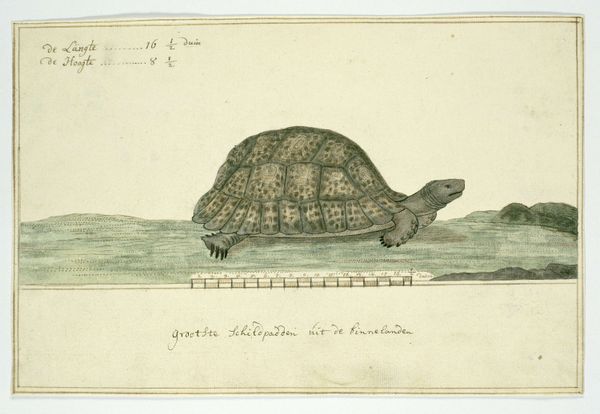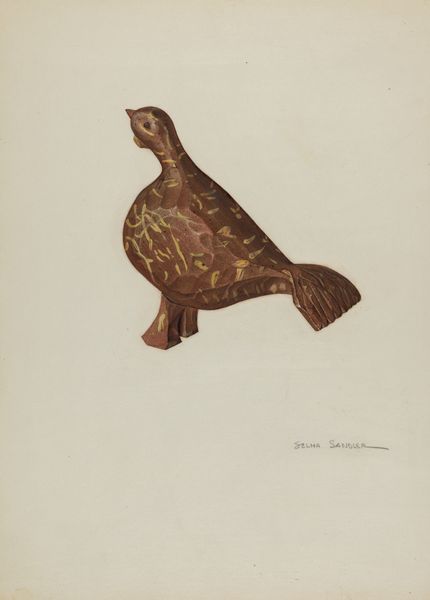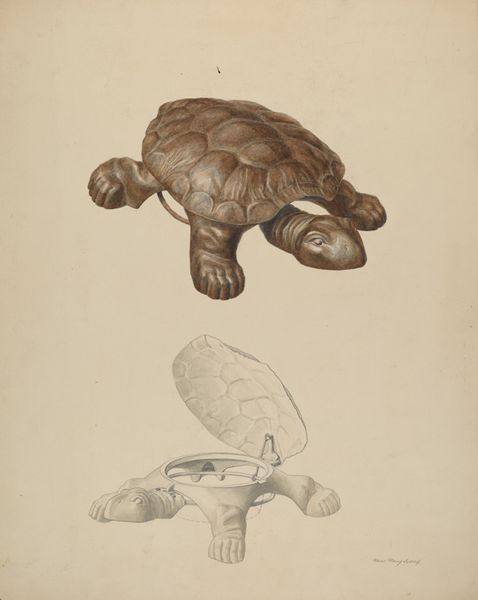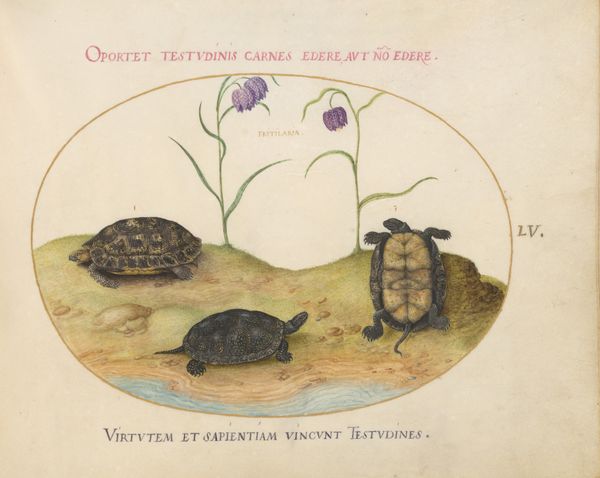
print, watercolor
# print
#
charcoal drawing
#
watercolor
#
pencil drawing
#
watercolour illustration
#
watercolor
#
realism
Copyright: Public domain
Editor: So, this is Edward Lear’s "Testudo tabulata (Chelonoidis denticulata)" from 1836, a print incorporating watercolor and pencil. It feels very...clinical, almost detached in its realism. What do you make of this kind of representation? Curator: The apparent detachment is revealing, isn't it? Lear's detailed rendering of this tortoise intersects with a larger history of scientific illustration and colonial exploration. How do you see this work fitting into the context of 19th-century natural history? Editor: I guess it's meant to be objective, scientific. But it's also undeniably aesthetic, which seems like a tension. Curator: Precisely. This tension highlights how seemingly objective depictions are always embedded within power structures. Consider the history of taxonomy and the ways in which Indigenous knowledges were often erased or subjugated by Western scientific classification. Can a portrait of an animal ever really escape the gaze and the intentions of its human author? What impact did the rise of scientific societies have on our understanding and treatment of animal populations in colonized regions? Editor: That’s…a lot to think about! I hadn’t considered how much the act of categorizing itself can be a form of control. Curator: And don't forget Lear was producing these images for a British audience, part of shaping their understanding and relationship to the natural world – a world increasingly impacted by imperial expansion. Editor: So it's not just a picture of a turtle; it's a picture *within* a specific historical moment and power dynamic. That gives me a totally different perspective. Curator: Exactly! Understanding these contexts lets us read these images as active participants in their time, rather than just passive reflections. Editor: This has really expanded my understanding of what to look for when engaging with historical artwork. Thanks!
Comments
No comments
Be the first to comment and join the conversation on the ultimate creative platform.
